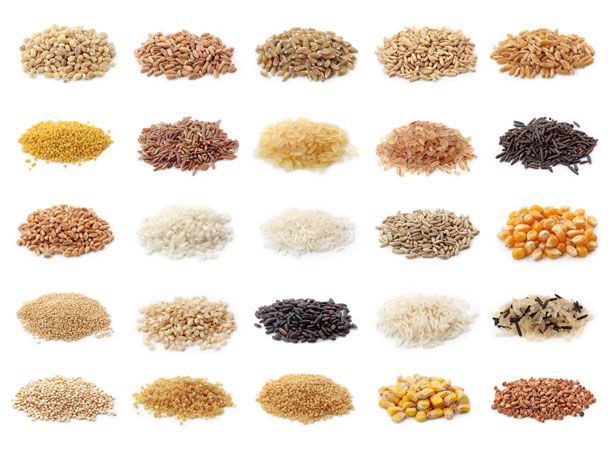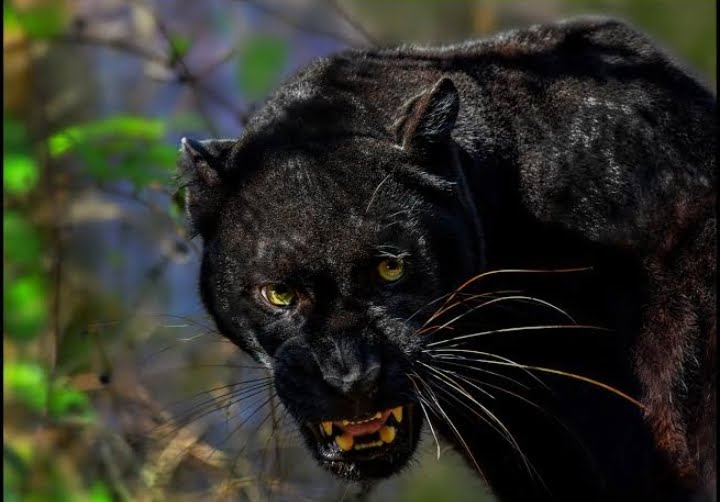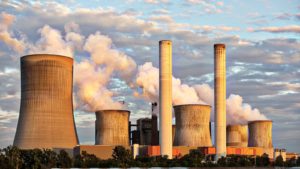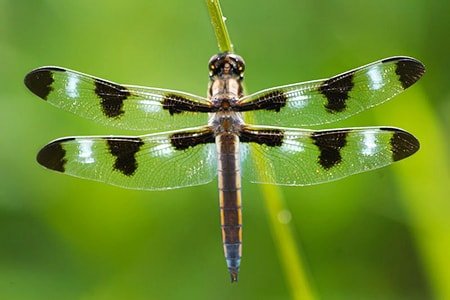The food chain is a natural process that traces the transfer of energy in the form of food from one organism to another. All plant and animal species, despite their size, depend on another plant or animal species for their survival. Food is very important therefore do not waste it. Click here to know why?
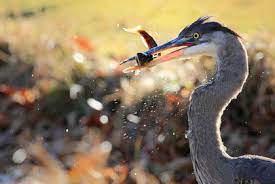
- What is a food chain?
- Types of animals present in the food chain
- Trophic level
- Types of food chains
- Examples of food chains
- Why is the food chain important for the environment?
- What role do humans play in a food chain?
- External causes affecting the food chain
- Loss and Transfer of energy in the food chain
- Food web vs food chain
- Some important points to remember about the food chain
- Food Chain Vocabulary to remember
- Frequently Asked Questions
- Bottomline
What is a food chain?
The food chain is a natural process that explains how energy transfers from one organism to another organism. It also explains which organism eats another organism in the environment. It starts with the producer organism, follows the chain, and ends with the decomposer. This chain explains how one organism is dependent upon another species for its survival.
Types of animals present in the food chain

Herbivores
An animal that eats only plants for its survival is herbivorous animal. Some examples of herbivores are Guinea pigs, rabbits, horses, deer, cows, elephants, and zebras. Herbivores include worms, insects, mammals, invertebrates, and birds.
Carnivores
An animal that survives on the meat of other animals is carnivorous. Carnivores often have sharper teeth or even fangs to help tear up the flesh. These animals usually prey on herbivores, and at times they may eat omnivores or even other carnivores depending on the availability. Carnivores include small creatures such as spiders, frogs, and bats, as well as eagles and hawks, snakes, wolves, tigers, lions, and crocodiles.
Omnivores
Any animal that can eat consumes both plants and animals that are omnivorous. Omnivorous animals have a set of flat and sharp teeth to help them digest meat, fruit, and vegetables. Bears, raccoons, pigs, chickens and Human beings are some examples of omnivores.
Trophic level
Trophic levels can be understood as the position of an organism in a food chain. The levels under the trophic levels are namely- producer, consumer, and decomposer.
Producers
The producers in a food chain include all autotrophs such as phytoplankton, cyanobacteria, algae, and green plants. This is the first stage in a food chain. The producers occupy the first level of the chain. The producers are autotrophs (organisms that make their food). Producers are any plant or other organisms that produce their nutrients through photosynthesis. These organisms make their food by using light energy provided by the sun and turning it into energy. They are the first level of every food chain as they make their food. Most autotrophs use the process called photosynthesis to create food from sunlight, carbon dioxide, and water.
Although plants are the most familiar type of autotrophs, Algae, seaweed, some types of bacteria, Phytoplankton (a tiny organism that lives in the ocean) is also a kind of autotrophs. Autotrophic organisms that use chemical compounds to produce their food, follow a process called chemosynthesis.
Consumers
Consumers are the organisms that are dependent on plants or other organisms for food. Almost all living organisms fall under this category. This includes herbivores that eat plants, carnivores that eat other animals, as well as parasites. These organisms consume producers and add their energy to their biomass. They cannot make their food from light or chemicals and thus rely on autotrophs.
Division of consumers
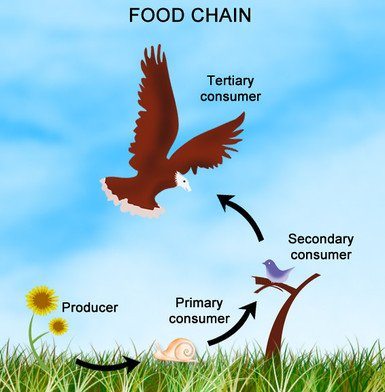
Primary consumers
Herbivores are primary consumers, while carnivores are secondary consumers. The second trophic level has primary consumers called heterotrophs. This level consists of organisms that eat the producers. Animals such as Deer, turtles, rabbits, birds are herbivores.
Secondary consumers
The third trophic level consists of secondary consumers, the heterotrophs that eat other consumers. The secondary consumers eat the herbivores. Animals such as dogs, cats, lizards, snakes, owls, etc are some examples.
Tertiary consumers
The fourth trophic level has tertiary consumers, also known as apex predators. They eat other consumers as well as producers. They are high-level consumers and predators. An example of a tertiary consumer is human beings who eat both producers as well as consumers.
Decomposers
Decomposers are the organisms that get energy from dead or waste organic material. This stage is the last in a food chain. They are an important part of a chain, as they break down organic waste materials which enrich the soil or land.
They play a major role in recycling nutrients back into the soil. Once they are decomposed into organic material, the nutrients are used by autotrophs or producers through the soil. In short, they recycle the matter back into the soil or atmosphere. Thus, Decomposers allow producers to begin a new chain again by moving nutrients and energy through an ecosystem.
Detritivores and Decomposers
The final stage consists of Detritivores and Decomposers. Detritivores are the organisms that eat non-living plant and animal remains. An example of this is scavengers such as vultures. Decomposers like fungi and bacteria also complete the food chain.
It is important to note that the decomposers and detritivores turn organic wastes, such as decaying plants and animals, into inorganic materials, such as nutrient-rich soil. They are an essential part of the ecosystem.

Types of food chains
Detritus food chain
The detritus food chain consists of different species of organisms and plants like algae, bacteria, fungi, insects, worms, etc. This chain begins with dead organic material. The food energy passes to the decomposers and detritivores, that is eaten by smaller organisms like carnivores. Smaller carnivores become a meal for bigger carnivores. Primary consumers like fungi, bacteria, protozoans, and so on are detritivores that feed on detritus.
Grazing food chain
The grazing food chain is a chain that starts with green plants. The energy passes through herbivores and then to carnivores. In a grazing food chain, energy in the lowest trophic level is acquired from photosynthesis.
Examples of food chains
A food chain usually starts with a plant. A simple example is as follows-
The plant gets its energy from sunlight and nutrients from the soil. Insect eats the plant is in turn eaten by a bird. A larger animal eats birds. When it dies, the decomposers decompose it. The nutrients return to the soil, starting a new food chain
In a forest, a simple example is as follows-
Trees ⟶ Deer ⟶ Tiger
Another example can be
Flower ⟶ Flies ⟶ Frog ⟶ Snake ⟶ Eagles
In a small water body, the chain may go as follows-
Aquatic Plants ⟶ Small Fishes ⟶ Larger fishes ⟶ Birds
Phytoplankton →Krill →Blue whale
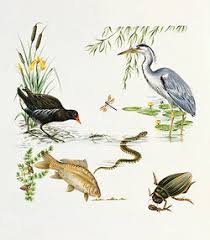
Grass→ Grasshopper →Rat→ Snake→ Hawk
Algae → Mosquito→ Dragonfly →Raccoon
Why is the food chain important for the environment?
Food chains are important as they show the interrelated relationships present in ecosystems. They reveal how each organism depends on other organisms for survival. Food chains also display what happens when a problem arises.
What role do humans play in a food chain?
The role of humans in the chain varies, as it depends on what the human consumes. If human beings consume only plants, they are primary consumers. On the other hand, if human beings consume an organism that consumes plants, humans are secondary consumers, and so on. Human beings are omnivorous animals.
External causes affecting the food chain
All living organisms hold a specific place in the food chain, which is based on the transfer of energy through an ecosystem. There are many external causes that can affect the food chain such as natural disasters and man-made disasters.
When there is instability in the ecosystem due to loss of biodiversity can affect other species. As the number of species in the chain reduces, there are lesser or no alternatives for the other dependent species.
When a predatory species becomes threatened or extinct, it affects the balance in the food chain. The population of prey and predator might change, and the prey population can explode.
Endangerment or extinction of one species can threaten the other species. The extinction of animal or bird species in the food chain can alter the physical environment as well.
Bioaccumulation
Just like nutrients and energy, pollutants can also transfer in an ecosystem through food chains. The accumulation of chemical pollutants is bioaccumulation.
Some animal species get affected when they consume toxic plants or animal prey. These toxins remain in the body and transfer to the next consumer. Heavy metal pollutants, such as lead, and mercury is a problem for marine ecosystems.

Biomagnification
Let us take a habitat that is polluted with lead. Almost all of the organisms will absorb some amount of lead due to respiration or consumption. Since lead cannot easily eliminate from the body, small amounts of lead will build up in the organism. As the food reaches the tertiary consumer, there will be a large amount of lead build-up in the organism. This process of the increased build-up of toxins is biomagnification.

While bioaccumulation affects all organisms in a polluted habitat, biomagnification mainly affects tertiary consumers, who are on top of a food chain
Loss and Transfer of energy in the food chain
All the biomass generated by primary producers is known as gross primary productivity. Net primary productivity can be understood as what is left over after the primary producer has used the energy for respiration. This is the remaining portion that is available to the primary consumers and the other organisms present in the food chain.

In terrestrial ecosystems, primary productivity is highest in warm, wet where there is plenty of sunlight. In contrast, deserts have the lowest primary productivity.
To show the flow of energy through ecosystems, food chains are energy pyramids. Here, each step of the pyramid represents a trophic level. The primary producers are placed at the bottom of the pyramid. The width of each level represents the amount of energy that is present in that trophic level. The width gets smaller further up the pyramid because some amount of that energy is present as a form that cannot be consumed by organisms at the next trophic level.
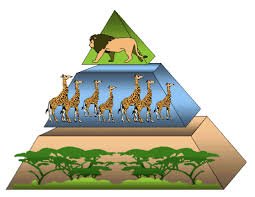
It is important to note that not all of the energy consumed or generated in one trophic level is available to the organisms in the next trophic level. At each level, some amounts of the biomass consumed can be excreted as waste, changed to heat during respiration, or the biomass is not transferred to the next organisms due to death (without being eaten).
On an average, about 10 percent of the energy stored as biomass in a trophic level is passed from one level to the next. This is known as the “10 percent rule”. It limits the number of trophic levels an ecosystem can support.
Food web vs food chain
| Food Chain | Food web |
| Linear explanation of which organism eats another organism. | A webbed explanation which includes all the food chains in the ecosystem |
| Shows one of the multiple paths that allow the flow of energy in an ecosystem | Shows multiple paths of the flow of energy |
| Do not overlap one another | Overlap and connect |
| Shows a simple feeding relationship between organisms | Shows a complex network of feeding relationships between the organisms in the ecosystem. |
| One possible path shows the way energy and nutrients can move through the ecosystem. | Consists of all the possible paths for the movement of energy and nutrients in the ecosystem. |

Some important points to remember about the food chain
- The food chain can be understood as the transfer of energy from one species to another.
- Energy is needed for the growth, health, and survival of every living organism.
- Food chains can be short or long. It depends on how many consumers are eaten before they decompose.
- In the food chain, some organisms create energy (producers) and some organisms use the energy (consumers) made by producers.
- Plants are producers of energy as they make their food through the process of photosynthesis.
- Animals are known as consumers, as they eat other animals and plants for their survival.
- There are four different types of consumers in the animal kingdom- Herbivores (an animal that only consumes plants), Carnivores (animals that consume other animals), Omnivores (an animal that consumes both plants and animals), and Scavengers (an animal that consumes dead animals.)
- Human beings are at the end of the the chain. They consume both plants and animals.
- If the food chain is long, the energy would become minimal. This would not benefit the animal at the end of the chain.
- There are more than 10,000 different kinds of organisms that decompose. They break down it into simpler nutrients that return to the soil. These nutrients are used by the plants.
- The nutrients that the decomposers break down help start a new energy chain.
- If one level is removed from the food chain, it can have negative impacts on the ecosystem.
Food Chain Vocabulary to remember
It is important to remember the keywords in the food chain.
- Producers- They are also known as autotrophs. They make their food with the help of sunlight. An example of producers is green plants.
- Consumers- They are organisms that do not make their food. They get the energy and nutrients by consuming other organisms. Consumers are of three kinds- herbivores, carnivores, and omnivores.
- Herbivores- These types of animals consume plants only. For example, deer, rabbits, elephants, koalas, etc.
- Carnivores- These animals consume other animals. For example, lions, tigers, hyenas, etc.
- Omnivores- These animals consume both plants and animals. For examples bears, birds, foxes, humans, etc.
- Decomposers- Organisms that break down the organisms. An example of an organism is bacteria.
- Trophic levels- This is known as the position of the organism in a food chain. The levels are namely- producer, consumer, and decomposer.
- Primary Consumers- These organisms eat plants in the food chain. Most herbivore animals fall under this category.
- Secondary Consumers- These organisms eat the primary consumers in the food chain. Most of the carnivore animals fall under this category.
- Tertiary Consumers- These animals can eat both primary and secondary consumers.
- Energy pyramids- This pyramid shows the flow of energy through ecosystems. Each level of the pyramid represents a different trophic level.
- Bioaccumulation- The accumulation of chemical pollutants, also known as bioaccumulation. This affects the organisms present in the food chain.
Frequently Asked Questions
What are some examples of food chains?
Following are some examples of food chains-
Trees ⟶ Deer ⟶ Tiger
Plants ⟶ Small Fishes ⟶ Larger fishes ⟶ Birds
Phytoplankton →Krill →Blue whale
Grass→ Grasshopper →Rat→ Snake→ Hawk
Algae → Mosquito→ Dragonfly →Raccoon
What is a food chain explained with example?
The food chain is a natural process that traces the transfer of energy in the form of food from one organism to another. An example of a this is as follows-
Flower ⟶ Flies ⟶ Frog ⟶ Snake ⟶ Eagles
What are the 5 food chains?
The five levels of a food chain are-
1 Level 1- Plants
2. Level 2- Animals that eat only plants
3. Level 3- The Animals that eat herbivores
4. Level 4- Animals that eat carnivorous animals
5. Level 5- Animals at the end of the chain
What are the first organisms in a food chain?
The first organisms present in the food chain are plants. They are also known as autotrophs as they produce their own food through the process of photosynthesis.
Who introduced the concept of the food chain?
The concept of the food chain was introduced by Al-Jahiz. The concept was further expanded by Charles Elton in his book “Animal Ecology” in the year 1927.
What are some examples of primary, secondary, and tertiary consumers?
Animals such as Deer, turtles, rabbits, birds are examples of primary consumers. Secondary consumers include animals like dogs, cats, lizards, snakes, owls, etc are some examples. Tertiary consumers include dolphins, sharks, whales, bears, human beings, etc.
What is bioaccumulation?
The accumulation of chemical pollutants is also known as bioaccumulation. This is known to affect the organisms present in the food chain.
What is chemosynthesis?
Autotrophic organisms that use chemical compounds to produce their food, follow a process called chemosynthesis.
What is an energy pyramid?
An energy pyramid shows the flow of energy through ecosystems. Food chains are often drawn as energy pyramids, and each level of the pyramid represents a different trophic level.
Who are Detritivores?
Detritivores are the organisms that eat non-living plant and animal remains. An example of this is scavengers such as vultures.
What is the 10 percent rule in the food chain?
On average, about 10 per cent of the energy stored as biomass in a trophic level is passed from one level to the next. This is known as the “10 per cent rule”. This limits the number of trophic levels an ecosystem can support.
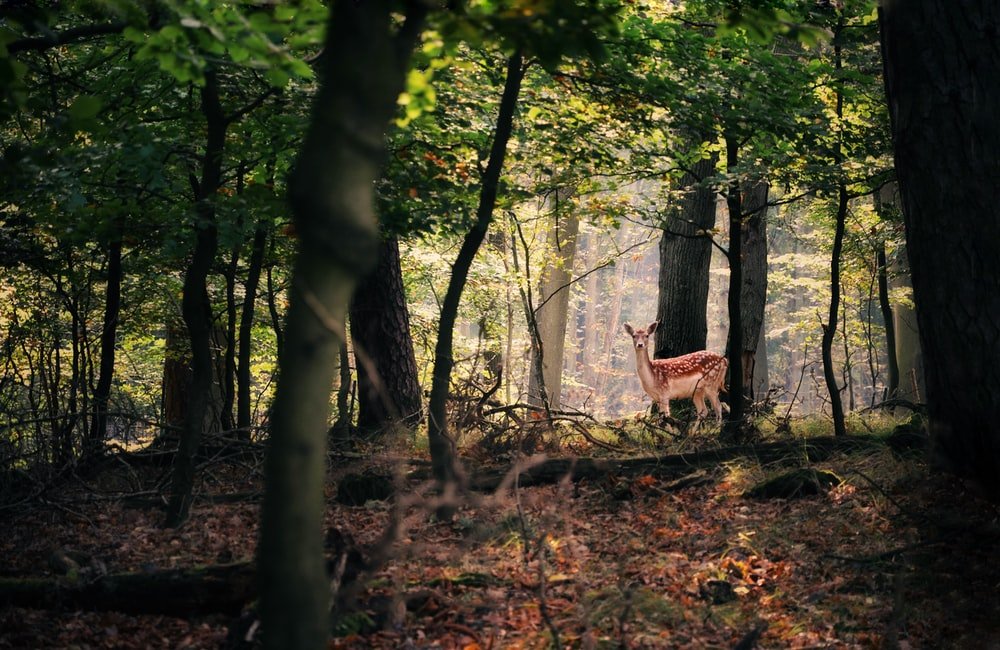
Bottomline
Since man-made and natural disasters affect the ecosystem, humans need to ensure no organism goes extinct. Any minor shift in the food chain will affect the food chain. The food chain plays a major role in the ecosystem.
Share with your friends
